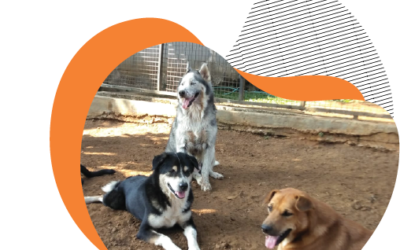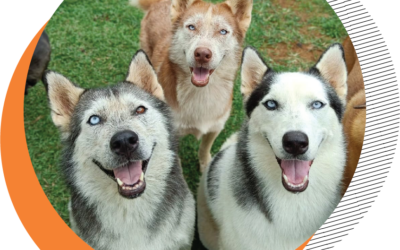
Creativity Without Limits: Animal Welfare Education for Teens
By: Drh. Mikeu Paujiah, Dipl. Montessori and Maryam Smeer, S. Kom
Translator : AWI Team
Junior high school is an important transition period for teenagers to understand the world around them. By teaching empathy towards animals through educational games, we can help students develop a more caring and responsible character.
Below we present some examples of games that can foster students’ social-emotional growth.
1. “My Favourite Animal”
Objective: To encourage students to learn more about their favourite animals.
How to play: Each student chooses a favourite animal, then they are asked to draw a picture or make a short presentation on how to care for the animal. For example, what their favourite food is, how they maintain their health, and what they need to live well.
Benefits: This is a light-hearted game that can nurture students’ sense of responsibility towards their favourite animals

2. ‘Pet Care Challenge’ with TikTok or Instagram Reels
Objective: Encourage students to create educational content on how to care for animals.
How to play: Students are challenged to create a short video showing how to care for a pet or help a stray animal, such as feeding a street cat, cleaning a pet cage, or describing animal welfare. These videos are then uploaded to their social media with a specific hashtag.
Benefits: In addition to learning, students can share their knowledge with their friends and followers on social media, which also increases others’ awareness of animal welfare.

3. ‘Empathy through Role Play’
Objective: To teach responsibility and research on the specific welfare of wild animals.
How to play: Students are asked to role-play different types of animals with different needs and challenges (e.g. pets, wild animals or animals in a zoo). They have to express how they feel in certain situations, for example when they are not fed or injured.
Benefits: Teaches empathy and care for animals by imagining
themselves in the animal’s shoes.

4. ‘Adopt a Species’ Group Project
Objective: To teach responsibility and research on the specific welfare of wild animals.
How to play: Each group of students is given an animal species (e.g. panda, elephant, tiger) that they symbolically ‘adopt’. They have to conduct research on the species, covering its habitat, threats and welfare needs. At the end, they present how we can help protect the species.
Benefits: Students become more aware of the threats faced by animals in the wild and the importance of conservation.

5. ‘Animal Mystery Puzzle’ game.
Objective: To teach about animal welfare indirectly through puzzles and stories.
How to play: Each student or group is given a story puzzle about an animal that is in danger or needs help. Students must work together to solve the mystery, determine what is wrong with the animal (e.g. starving, sick or improperly cared for) and come up with a solution to help.
Benefits: Enhances critical thinking skills while instilling a deep understanding of the responsibility of caring for animals.

6. ‘Animal Welfare Investigation’ (Role-Playing)
Objective: Develop students’ analytical skills on animal welfare cases.
How to play: Students are divided into groups acting as ‘animal welfare investigators.’ They are given a case scenario of an animal welfare violation, such as animal neglect or abuse, and must investigate by gathering facts, interviewing ‘witnesses’ (played by friends), and then reporting on solutions or actions that need to be taken.
Benefits: This game teaches students the importance of identifying animal welfare issues and taking appropriate action.

7. Community Project: ‘Real Action for Animals’
Objective: To teach students the importance of taking action for animal welfare.
How to play: Students are divided into groups to plan and implement a community project related to animal welfare, such as an animal adoption campaign, raising funds for an animal shelter, or organising an awareness programme at school.
Benefits: Students learn to take concrete actions to help animals and increase their sense of environmental responsibility.

8. Interactive Quiz on Animal Welfare
Objective: To test students’ knowledge of animal welfare, animal protection laws and how to care for animals.
How to play: Teachers create an interactive quiz using apps like Kahoot or Quizizz. The questions can cover topics such as types of animal food, animal rights, and ideal conditions for caring for pets.
Benefits: Makes learning about animal welfare more interactive and fun, and encourages healthy competition among students.

9. “Hunting Animal Facts”
Objective: To teach students important facts about animal needs and welfare.
How to play: The teacher prepares a series of clues about different types of animals and their welfare. Students have to look up certain facts about the animals, such as their food, habitat or how to care for them, and complete the fact hunt in teams.
Benefits: The game is light and interactive, while introducing students to important knowledge about animals.

10. “Matching Animals and Treatments”
Objective: To teach the responsibility of caring for animals in a fun way.
How to play: Prepare animal picture cards and description cards of their care needs (such as feeding, housing, medical care). Students have to match each animal with its corresponding care. For example, they should match the picture of a dog with the description ‘taken for a walk every day’.
Benefits: Make students understand the responsibility of animal care through a simple card game.

ANIMALWELFARE.ID
Fostering a young generation that cares for animals is an investment in the future. By teaching empathy and responsibility from an early age, we can help students grow into better individuals. Educational games are one effective way to achieve this goal.
In addition to the activity ideas above, you can also find other activity ideas and learning materials in the Syllabus that has been compiled by the Animal Welfare Indonesia Team. The syllabus can be downloaded for free at this link.
Happy learning to love animals!
Related Post :





